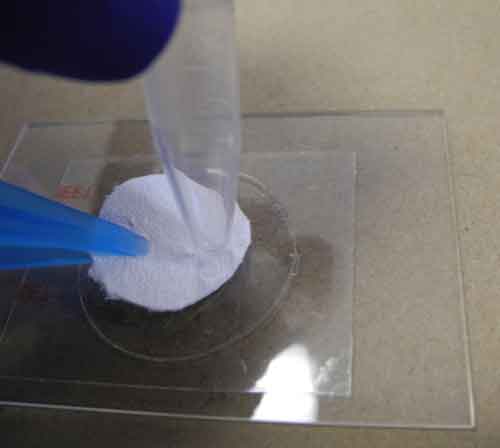
A Sticky Situation
By IFI Team | Posted on:
Recovering DNA from fingerprints on adhesive surfaces (lift cards, lift tapes, etc.)
Alexander Sinelnikov1 (alex@ifi-test.com)
1 Independent Forensics, 500 Waters Edge, Suite 210, Lombard, IL 60148, USA; 2SIRCHIE, 100 Hunter Place Youngsville, NC 27596 USA
Continuing needs (and pressure) from law enforcement and security concerns has pushed forensics to process smaller and smaller items of evidence – e.g., touch DNA and single fingerprints.
Lysis chamber is a simple and inexpensive device that helps recovering DNA from fingerprints on adhesive surfaces (lift cards, lift tapes, etc.). The components of the lysis chamber are two 3 x 2 in (75 x 50 mm) glass slides (one with adhesive circle covered with protective liner), o-ring and two binder clips. The adhesive evidence is immobilized on the slide with adhesive circle as shown in Figure 1.
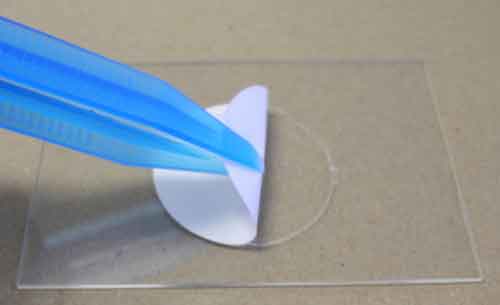
Figure 1a
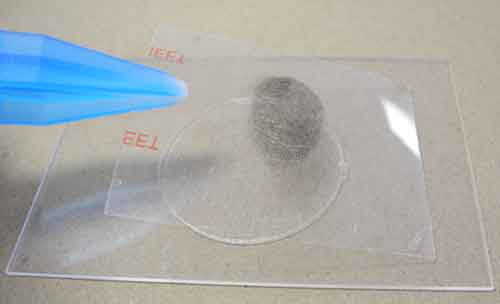
Figure 1b
Figure 1. A) The protective liner is being removed to expose the adhesive surface of the adhesive circle on the bottom part of the lysis chamber. B) The lift card with a powder developed fingerprint is being placed on top of the adhesive circle so that adhesive side of the lift card is facing up.
Once the adhesive evidence is immobilized on the pre-positioned adhesive circle, and its adhesive surface is exposed, the biological evidence on the adhesive surface can be collected by either (i) direct swabbing, (ii) swabbing directly after the application of the adhesive taming material, or (iii) swabbing after DNA extraction on the surface of the adhesive.
If a significant amount of biological material was deposited on the adhesive surface (e.g. after a direct contact of skin with adhesive surface), placing 100 mL of lysis buffer on the adhesive surface and swabbing with cotton swab (methods i and ii) will collect enough biological material off the adhesive surface for a standard DNA extraction protocol: collection of biological material from the swab using a spin basket centrifugation followed by 56oC incubation of the collected material in the collection tube. However, if only a small amount of biological material was collected on the adhesive surface (e.g. lifted fingerprint), DNA extraction on the adhesive surface (method iii) will maximize DNA recovery.
Covering adhesive surface with hydrophilic layer (adhesive taming material) will help to overcome the hydrophobicity of the adhesive surface. Figure 2 shows how a fingerprint on adhesive surface is being covered with adhesive taming material.

Figure 2a
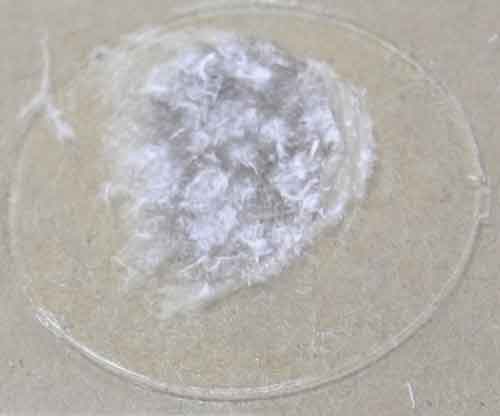
Figure 2b
Figure 2. A) The adhesive taming material is applied on top of the fingerprint: one piece of adhesive taming material is held with forceps and pressed against the adhesive surface with the help of empty 1.7 mL tube. B) The fingerprint on the lift card covered with adhesive taming material.
After fingerprint on the adhesive surface is covered with adhesive taming material 100 - 150 mL of lysis buffer is applied. After this step, the biological material in the fingerprint can be processed by either directly swabbing the adhesive surface (Figure 3), or swabbing after DNA extraction on the surface of the adhesive. In the latter method, the lysis chamber is assembled by placing o-ring on the bottom glass plate around the specimen, placing the top glass plate on top of the o-ring, and clamping two glass plates together with two binder clips (Figure 4).
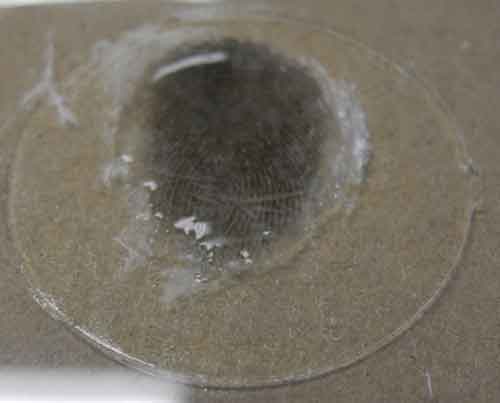
Figure 3a
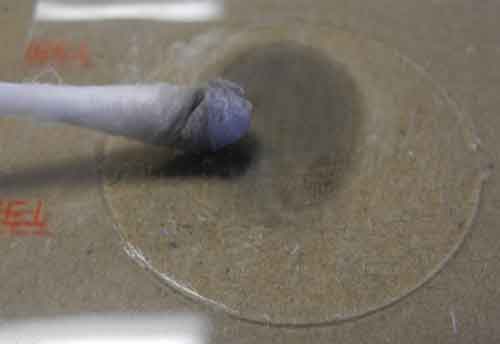
Figure 3b
Figure 3. A) Lifted, powdered fingerprint immobilized on glass slide, covered with adhesive taming material and 100 mL of lysis buffer. B) Swabbing fingerprint shown in (A) – note the adhesive taming material on the swab.
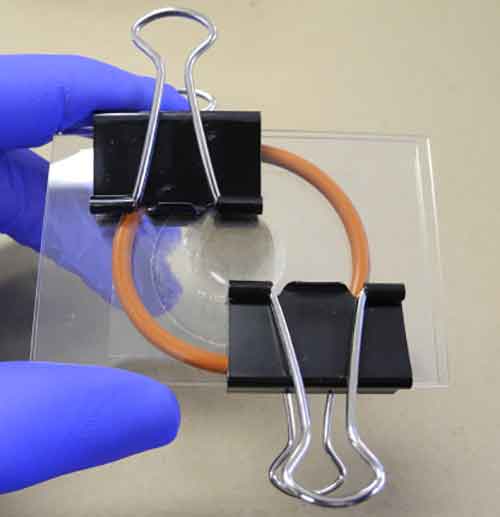
Figure 4a
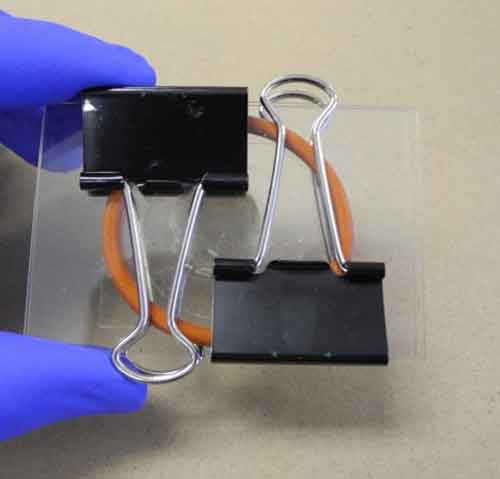
Figure 4b
Figure 4. A) Assembled lysis chamber: fingerprint on a lift card covered with lysis buffer is on the bottom plate, surrounded by o-ring; top plate is placed on the o-ring and two plates are clumped together by two binder clips. B) Assembled lysis chamber: binder clips are lowered and the chamber is ready to be placed inside the incubator/oven.
In order to minimize losses of DNA during purification step, we recommend DNA purification on OneTouch Xs™ DNA purification column. Xs™ DNA purification column is filled with resin that traps and retains PCR inhibitors but does not bind DNA and thereby has high yield recovery of nucleic acid.